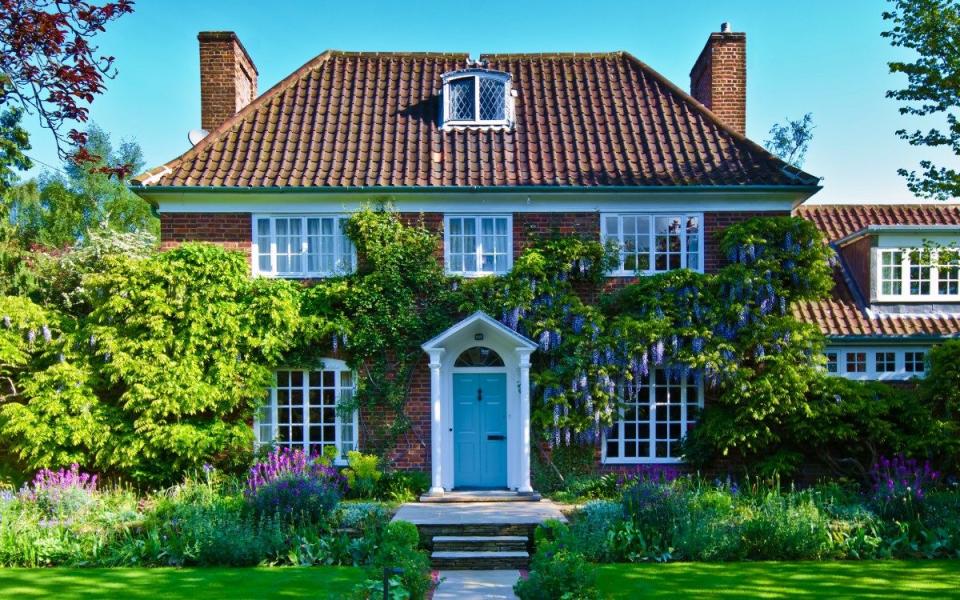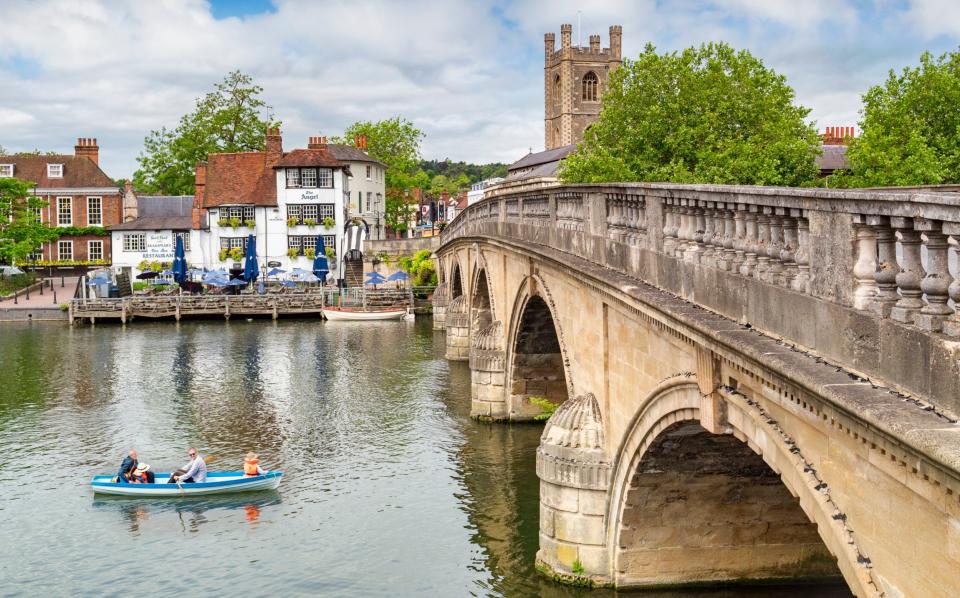18 things you need to know about buying a home in 2023

Stubbornly high inflation and the effect it’s currently having on the mortgage market means house prices are widely forecast to fall this year. But where does that leave buyers, and how can you be sure to get the best price for a new home?
Most believe that the cost-of-living squeeze, which is compounding pre-existing affordability constraints, will keep a lid on demand and prices.
Tom Bill, head of UK residential research at Knight Frank said “UK house prices will come under growing pressure as mortgage rates rise and we expect a 10pc decline by the end of next year.”
House prices have already fallen by 4pc, according to lender Nationwide. And when inflation is taken into account, this represents a plunge of 13pc, Capital Economics calculated.
Yet while prices are falling, they are doing so from a high point. Figures from Halifax at the end of 2022 showed the value of an average home in the UK to be £46,000 higher than in March 2020 meaning if they drop by 10pc, prices are back to where they were a year or 18 months ago.
Mr Bill also said the price drops are likely to be temporary. “When stability returns to the mortgage market, we think demand will prove more resilient than expected given the cushioning effect of strong wage growth, record levels of housing equity, amassed lockdown savings, the availability of longer mortgage terms, forbearance from lenders and the popularity of fixed deals in recent years,” he said.
One measure to watch is the gap between expectation and reality.
Richard Donnell of Zoopla, a property portal, says: “The gap between asking and agreed sale prices widened in the last three months of 2022 to 3pc, which is in line with the pre-pandemic period. If this measure goes below 5pc, it’s a sign that prices will fall more quickly.”
Here, Telegraph Money details what property buyers need to know in 2023...
Starting the search
Register online and in real life
The obvious first steps to finding a property are to register on the main portals, including Rightmove and Zoopla. Don’t leave it there, also go and register with the estate agents operating in the search area – and build a rapport.
“Be in regular contact,” says buying agent Jess Simpson, who runs her own firm.
“Have sympathy for them and don’t give agents a hard time or you’ll be at the bottom of the list.”
First-time buyers
Mortgages
Mortgages are now at their highest rate since 2008 and which means that affordability is more important than ever. Average rates on two-year fixed rate mortgages were 6.26pc as of June 27, according to Moneyfacts.
Nevertheless, the way first-time buyers or anyone on a tight budget can protect themselves from volatile interest rates is to opt for a fixed rate, says Mark Harris of SPF Private Clients, a mortgage broker.
Mr Harris says: “Mortgage deals can be booked up to six months before you need them. If rates fall by the time you come to take out the mortgage you can always opt for another product.”
Saving for a deposit
First-time buyers aged between 18 and 39 can get up to £32,000 from the Government by opening a Lifetime ISA. For those planning on buying a house that will cost under £450,000, this is worth looking into. A scheme launched in 2017, savers can put up to £4,000 a year into the “Lisa” either as a lump sum or ad hoc cash transfers.
The state will add a 25pc bonus if the money is used towards a first home (or retirement) but the Lisa needs to be open for at least 12 months to receive the bonus cash.
What about Help to Buy?
It’s too late. “If the Government were going to bring something in to replace Help to Buy, it would have happened by now,” says Jeremy Leaf, a north London estate agent and a former Royal Institution of Chartered Surveyors residential chairman.
However, he adds the government-backed mortgage guarantee scheme “has been used by many and perhaps should be even more widely known about”.
Open until the end of December 2023, it means the Government will cover some of the cost if the lender loses money. There are a few restrictions: properties need to be less than £600,000; can’t be new-builds; and mortgages need to be repayment (not interest-only).
Shared Ownership
This scheme allows first-time buyers to purchase a share in a property typically from a Housing Association and then pay rent on the remaining part. To qualify, buyers need to have a household income of less than £80,000 (less than £90,000 for Londoners) and own no other property.
Climbing up (and down) the ladder
Second steppers
The term refers to buyers moving up the housing ladder to get more space – in a typical scenario this might mean going from a flat to a two or three-bedroom terraced house. Second-steppers are often first-time sellers.
No longer classed as “chain free” by the market, this process is about juggling the act of selling and buying in the same step.
Getting on top of paperwork is the number one priority as a missing element can scupper the transaction. These might include finding the title documents, gas check certificates, ordering an Energy Performance Certificate, locating planning permission for any major work, and subsidence warranties.
Forever homes
Chances are that this will be home for the longest, and the largest financial outlay in a lifetime. The advice from all is to make no mistakes.
View it at different times of the day to understand what the house and neighbourhood is like. Nowhere is perfect; buying agents agree that if a property ticks 7 out of 10 boxes on a must-have list, then it’s the equivalent of a jackpot.
Compromise on aspects that can be changed – kitchens and bathrooms – but not on those which can’t such as electricity pylons or a lack of natural light.
Moving with families
To apply for a primary school place for a child to start in reception, parents need to be living within the catchment area of the chosen school by the January before they start school (for secondary school, the deadline for applying is October 31).
It’s always possible to make a late application but spaces will vary school to school. If it’s likely that the chosen area has a high demand for places, make the move as early as possible to avoid any problems.
Downsizers
Those in their 70s, despite owning almost a quarter of all properties, account for only 8pc of house moves, research by estate agency Savills revealed in 2022. This could change. As the cost of living rises, Telegraph readers’ money-saving tips for 2023 counted downsizing among the best course of action.
Properties ideal for downsizers tend to be those close to shops and services, with manageable gardens. If a particular piece of furniture is precious, take measurements of it on viewings to ensure it’ll fit in the new home.
We’ve heard from readers who’ve had great experiences when downsizing to smaller properties – but it’s not always plain sailing.
Country houses
Those in search of a rural property should be wary of setting too many filters on the online portals. There are so many variables when it comes to country houses that it’s possible to miss out on homes that might work.
Be aware of other elements such as whether the property is connected to mains gas or sewage system (the more rural, the less likely this will be).
Buy-to-let
The combination of mortgage rate increases and government tax policy (tax relief on buy-to-let mortgage payments now restricted to 20pc, while income tax of 40pc is charged on rental income for higher rate taxpayers) have recently thrown a spotlight on the buy-to-let market – especially in areas of low yields such as the capital.
Landlords also must deal with more regulation than ever before, with more coming down the track, adds Donnell.
This isn’t the market for amateur investors to join, says Leaf. “Professionals and experienced landlords taking a longer-term view will still find a place.”
Leasehold properties
While Michael Gove has pledged to end the “outdated feudal system” indicating that he plans to scrap most leaseholds in England, until that happens leaseholds are here to stay. It means that rather than owning the flat, the owner rents it for a period.
When buying, experts agree that leases should have at least 83 years left to run; any less and extensions become expensive and homes are harder to sell.
Second-home buyers

During the pandemic, many rushed to buy a second home in the country only to regret it and head back to the city.
“Before buying a second home, have a proper look in the mirror,” says Charlie Wells of Prime Purchase, a buying agency.
“There is ‘proper’ countryside and then country-lite – so work out which one you are. Do you want a choice of delis and coffee shops or are you happy to go rural?”
There are parts of the countryside where you can “get away with not owning a pair of wellies”, such as around Marlow and Henley, continues Wells. Then there are more woolly parts of Wiltshire where you leave some creature comforts behind.
“And then there are the wilds of Northumberland, North Yorkshire or Cumbria, where you take it to a whole new level.”
Search aids
Buying agents
To get to the front of the queue – and for those needing reassurance on an area, property or the price to pay – buying agents have access to properties sold in the private market alongside acting for the buyer when it comes to negotiating the price (estate agents act for the vendors only).
They cost between one and three per cent of the purchase price, and some also charge a retainer.
Door dropping
If nothing is coming up on the market, it might be worth doing a letter drop in the search area. There are obviously no guarantees but it has been known to result in success – catching unawares someone who was thinking about selling.
Keep the letter simple and explain the details behind the move and the chosen street or property. Vendors are likely to be emotionally invested in their houses so presentation is key.
Other options include posting on local Facebook groups or using Nokkel, an app that links buyers and sellers.
Next steps
Negotiating a price

Economic developments can have an avalanche effect on the housing market but they impact very differently on individual regions, so check local market conditions before being aggressive with the price, says Nigel Bishop of Recoco Property Search, a buying agency.
While parts of the Home Counties are seeing reduced demand, those in Bath are holding their value. Others are more bearish and recommend all buyers have the scope to slice 5pc to 10pc off asking prices – and sellers are expecting this.
Paying the price
Just beware of renegotiating an agreed sale price –“gazundering” in the jargon, warns Mark Harris of mortgage adviser SPF Private Clients.
He says: “Lenders will need to be told about the renegotiated price and, even if the amount borrowed remains the same, a new mortgage offer will be issued.
“This may mean paying a higher mortgage rate or, worse, the lender may reduce how much it is prepared to lend – especially if the affordability criteria have changed.”
Purchase costs
There’s lots more to it than the sale price. First, it’s the “soft costs”. Most mortgage lenders will require an arrangement fee and then there’s a valuation fee the lenders charge to check the property offers sufficient security for the loan.
A typical broker fee in the UK will lie between £916 and £1,634, or between 0.3 and 1pc of the value of the property, according to figures from money.co.uk.
Next is the survey, which many prospective buyers pay for even though the sale falls through. Budget for paying this more than once in the process of a house search and expect to pay between £400 and £1,000 each time.
Then there are conveyancing fees, which range from around £500 to £1,150, plus approximately £700 in disbursements (third-party fees for elements such as searches), according to research by Reallymoving.
The final, and often most substantial (after the property itself) is stamp duty.
This article was first published on March 26 2023 and is kept updated with the latest information.

 Yahoo Finance
Yahoo Finance 